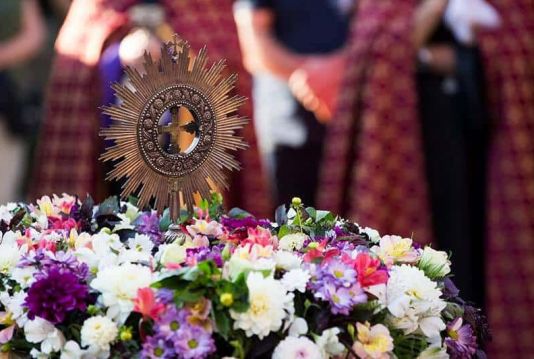
The Feast of the Exaltation of the Holy Cross is one of the 5 major feasts of the Armenian Church. The Holy cross, as defined by Gregory of Tatev, has become the bridge that unites heaven and earth, "the one who opens the doors of heaven and giver of the heavenly kingdom as an inheritance."
According to church tradition, when the Holy Cross of Christ was found in Golgotha and was raised up for the view of the faithful, the first bishop of Jerusalem St. Hakobos Tyarneghbayr (33-62 years) sang the hymn "Let's run to Your land of the cross Christ”.
During the persecution against the Christians that lasted for about three centuries, the place of the Lord's Holy Cross remained unknown again.
In 326, Queen Helena, the mother of Constantine the Great, found the Holy Cross of Christ in Jerusalem with Bishop Makar and the believers. Bishop Makar of Jerusalem raised it for the worship of the faithful. In 333, Constantine the Great built the Holy Resurrection Temple on Christ’s grave. On September 13, the eve of the temple was celebrated, following which it was celebrated every year for 8 days. On September 14, they gathered in Calvary, raised the Holy Cross in front of the people and worship.
The Feast of the Exaltation of the Holy Cross gained great importance especially after the return of the Lord’s Holy Cross from the Persian captivity, when the return of the liberated Holy Cross to Jerusalem was emphasized. It happened in the first half of the 7th century. During the Persian-Byzantine War in 614, the Persians captured Jerusalem and captured the Holy Cross of Christ.
The Byzantine army led by Emperor Heracles won the long lasted war. The Armenian troops, led by Mzhezh Gnuni, contributed greatly to this. The liberated Holy Cross was taken across Armenia with grand ceremonies and religious ceremonies to Constantinople and then returned to Jerusalem.
The Armenian Church celebrates the Feast of the Exaltation of the Holy Cross
between September 11-17.